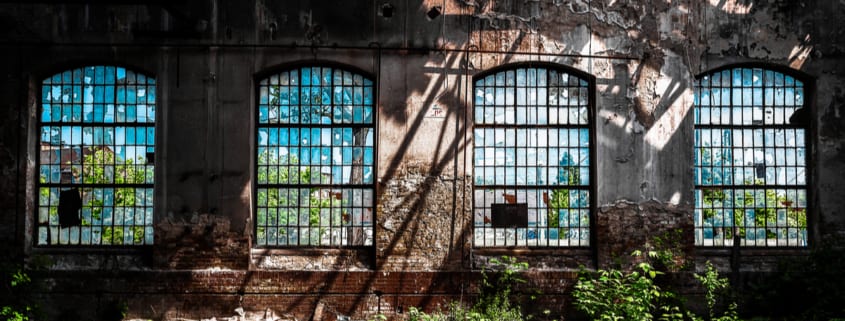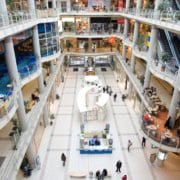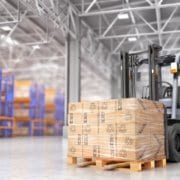Adaptive Reuse: What to Do with Vacant Commercial Property
Most commercial properties will have a vacancy at one point or another, and the larger the property, the bigger the hit to your cash flow. With regards to risk and insurance as well as the need to continue maintenance regardless of if there’s a tenant, it’s important to resurrect these properties as soon as possible. Vacant properties are linked to higher crime rates (particularly arson) and declining property values.
But this isn’t a problem plaguing only industrial cities. Often times, it’s not location that is impacting the vacancy rate but rather supply and demand. Due to rapid growth nationwide, these two factors have fallen out of equilibrium in many cities. Further, the vacancy rate is increasing, thanks to factors such as the growing number of retailers going into bankruptcy, the rising number of offices leveraging remote employees and co-working spaces, and the shift from an era of industry to an era of information.
But don’t get too disgruntled — these vacant properties also represent unique opportunities to reuse or refresh the structure, serving to revitalize the local neighborhood and reinstate your cash flow. Read ahead to learn about one up-and-coming strategy to address this issue and some ways it’s being implemented in communities today.
What is Adaptive Reuse?
“Adaptive Reuse” refers to the situation where you take an existing building and repurpose it for a different use, while maintaining as much of the original structure as possible (though sometimes retrofitting and upgrades are required). “Adaptive reuse” differs from “renovation” in that the second life of the property has a drastically different purpose from the first. Leasing out to unconventional tenants or types of businesses can also be considered adaptive reuse.
Deloitte suggests, “In the future, we could see increased vacancies across property types as existing buildings outlive their utility due to changing occupant preferences, higher costs, and availability of other, better options such as state-of-the-art and environmentally-friendly buildings. Given this scenario, adaptive reuse could effectively be a key factor in the future real estate ecosystem.” Studies suggest that over the next ten years, new development will decrease, and up to 90% of development will be in the form of renovation and adaptive reuse.
Why Adaptive Reuse?
Research shows that adaptive research can be up to 16% cheaper than new construction and take 18% less time to complete a project. According to Deloitte, “Reuse of vacant structures could also give a new lease on life to the neighborhood while supporting the local economy, and enable people to stay close to their workplaces – all the while helping preserve the social and cultural heritage of a region… Also, if repurposing is done with smart and sustainable features in mind, it can help improve building performance and valuation.”
Adaptive reuse also allows developers to utilize valuable but otherwise inaccessible plots of land, particularly those nearer to city center. And some states, such as California, provide incentives for adaptive reuse, such as flexibility in zoning requirements and building codes, or even tax breaks.
Examples of Adaptive Reuse
The thousands of square feet of commercial space that is currently vacant offer vast opportunities to creative and open-minded property owners. Below are just a few ways we are seeing existing but vacant properties being transformed for entirely new uses.
Shopping Malls → Mixed-Use Spaces
Old suburban shopping malls are being repurposed into mixed-used developments, or lifestyle centers, that feature multi-family living, hotels, gyms or yoga studies, co-working office spaces, retail and entertainment tenants, and sometimes even civic amenities such as libraries or post offices. This type of upgrade helps to better service the needs of the local community and create a destination for social interactions.
Warehouses → Breweries
The craft brewing business has exploded in recent years, growing to over 5,000 breweries in just the past two decades. Many times, these businesses find their new home by outfitting an existing building. Blueprint CBRE suggests that warehouses in general are well-suited to the brewing business – the sturdy, thick construction is conducive to better brewing. In many cases, a brewery moving into one of these vacant properties is the first sign of an impending urban revitalization.
Distribution Centers → Indoor Agriculture
These large spaces are perfect for vertical indoor vegetable farming. Further, it enables farmers to be close to their customers, allowing them to save big on logistics. This style of farming also requires only a fraction of the land and water used by traditional farmers. In addition to urban agriculture, aquaculture (or fish farming) is also starting to take notice of this type of vacant space.
Schools → Senior Living
National stats show that anywhere from 1,200 to 2,200 schools shut down each year. However, repurposing schools can be challenging, as they are built for a specific purpose. They don’t have the large individual spaces like a shopping mall or the cavernous interior of a warehouse. For senior living, though, old schools are perfect. They already have small individual units, as well as predefined communal areas.
Offices → Multifamily
The demand for office space is on the decline (thanks in large part to the increase in co-working and instances of remote working), while the demand for multifamily living is on the rise. Thus, conversion from the former to the latter is only logical. Further, this version of adaptive reuse addresses the need for more urban living. In fact, Urban Land, calling this trend the “boardroom to bedroom boom”, asserts that “almost half the top office central business district markets in the United States [in 2015] were experiencing significant office-to-residential conversions”.
Factories & Industrial Plants → Parks
Worldwide, cities are turning old industry or waste sites into beautiful public spaces that highlight, rather than hide, the old pipes, railways, and water towers. There’s the High Line in New York City – Manhattan’s famed “linear park”, which now attracts more visitors than any other destination in NYC. There’s the Gas Works Park in Seattle – the city’s most iconic park, which features remnants of a coal gasification plant. And there’s Mount Trashmore in Virginia Beach, which converted an abandoned landfill into a park with walking trails, playgrounds, volleyball courts, and even a skate park.
You may also be interested in our blog post about changing opportunities in the CRE Market!











